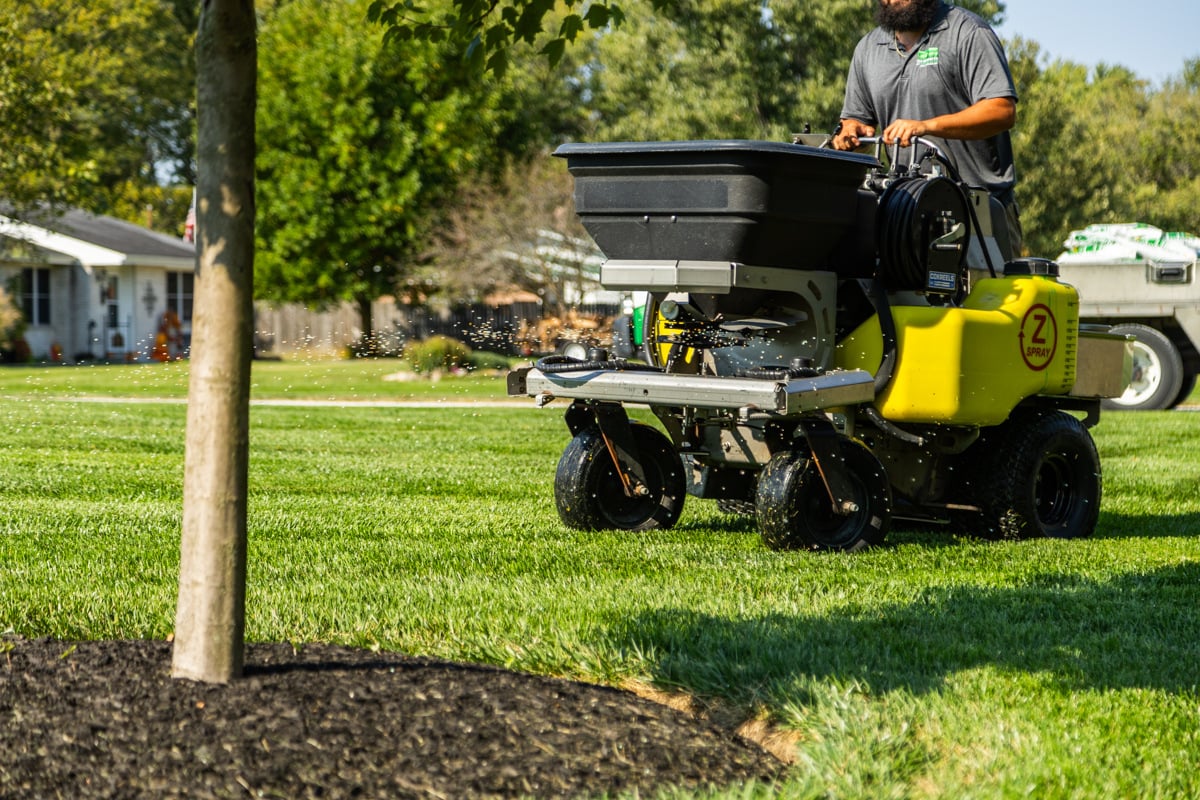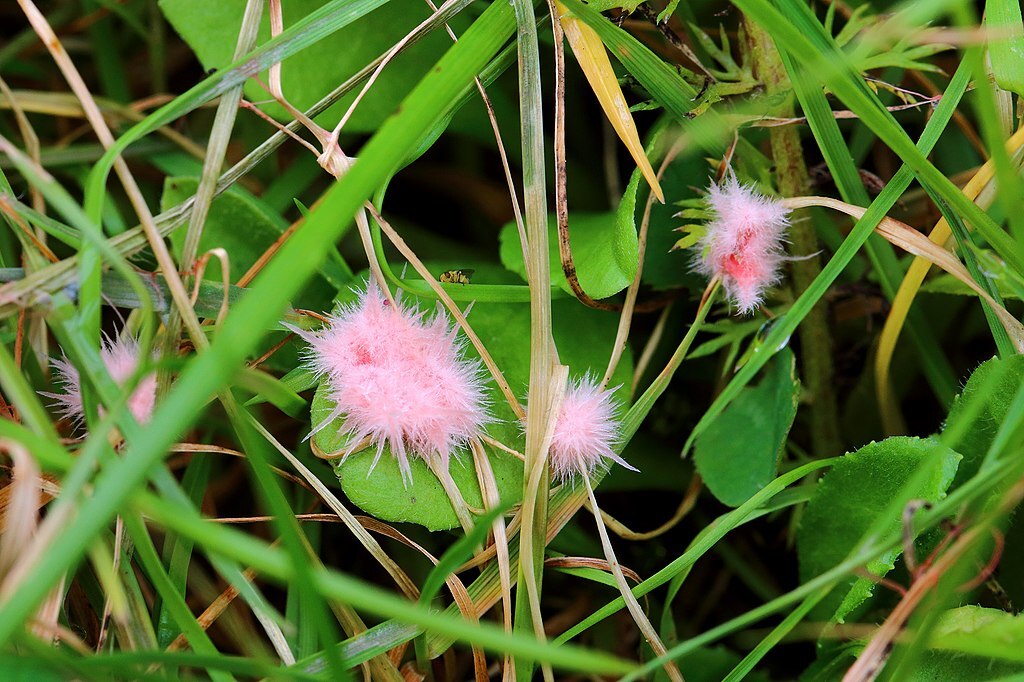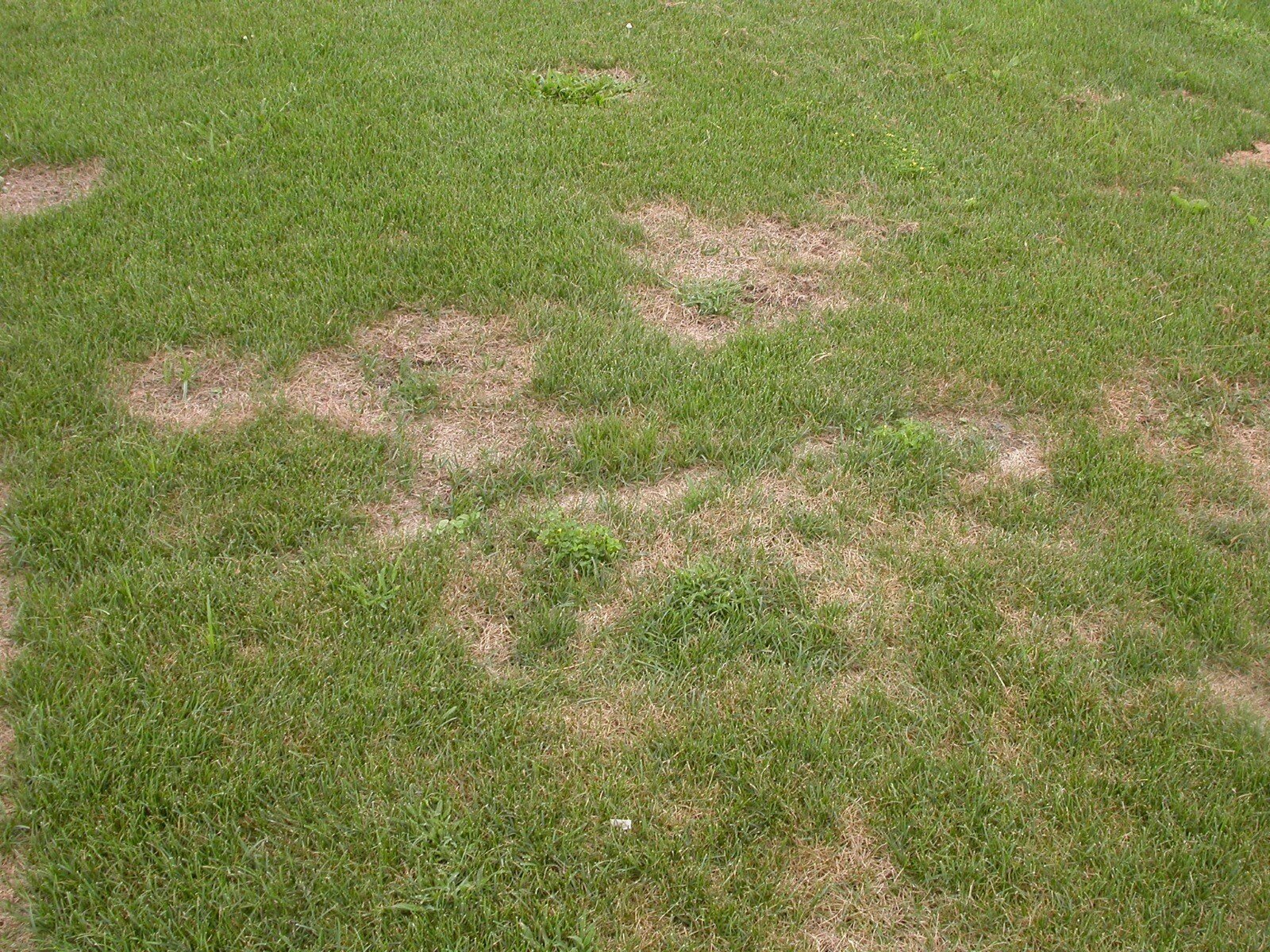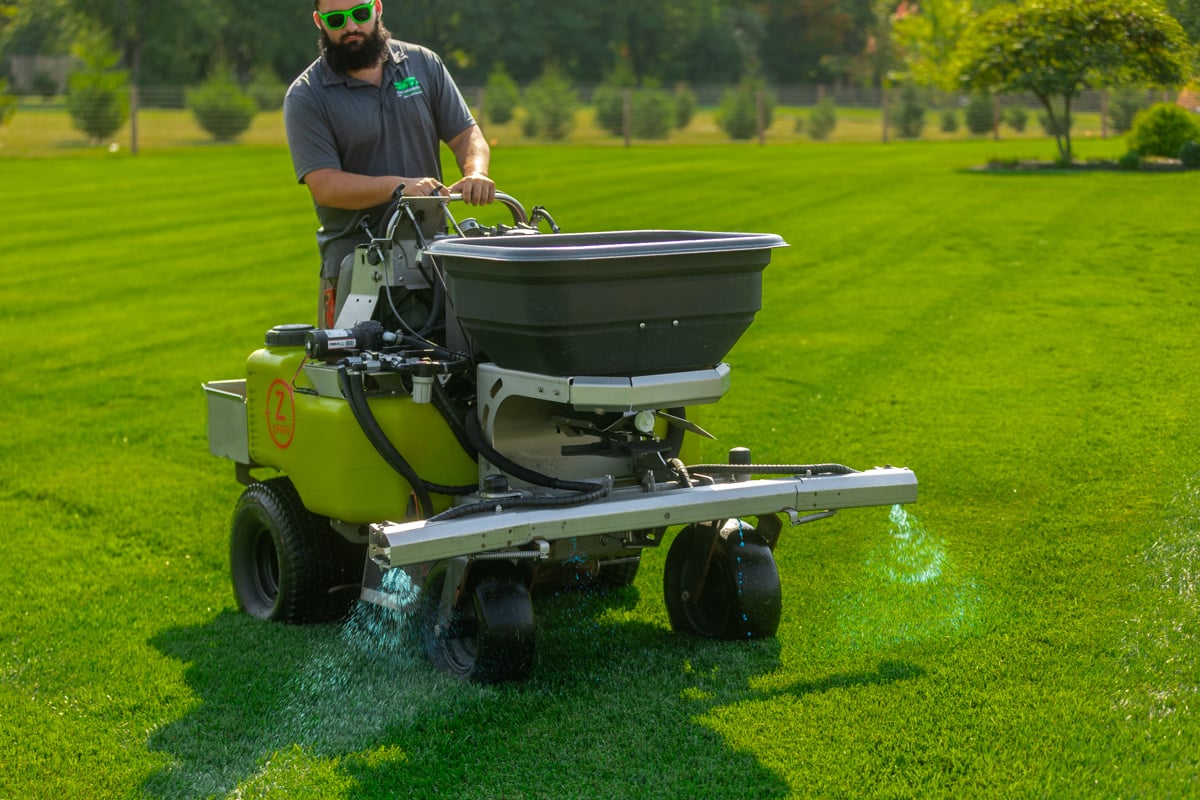



You step outside expecting to see your beautiful green lawn but instead you’re greeted by weird reddish patches that look like your grass is trying out a bold new hair color. And suddenly, you are left wondering: What is that? Did something spill? Is my lawn sick?
These strange spots could be caused by red thread lawn disease, a common (and honestly, kind of dramatic) turf fungus that shows up when your grass is feeling a little under-nourished and overly damp.
The good news is that it is treatable, and your lawn is not dying. It’s just trying to tell you something is off. You can usually identify red thread by its pinkish-red threads on grass blades and patchy appearance, especially in the spring and fall. With the right lawn care program and a little know-how, red thread can be kicked to the curb.
Let’s walk through what red thread lawn disease is, how to spot it, what causes it and, most importantly, how to get rid of it without losing your sanity - and by getting some help.
Red thread lawn disease sounds like something your grandma might have warned you about while she was knitting sweaters, but nope, this isn’t a sewing mishap. This is a turf disease that likes to pop in for a visit during our lovely Indiana springs and falls, especially when your grass is cut a bit taller.
The good news? It’s not a lawn apocalypse. Red thread lawn fungus might make your turf look rough, but it doesn’t kill the grass. The crowns and roots stay alive and well, so your lawn will bounce back, eventually.
Wondering, “Why is my grass turning red?” Those weird reddish, pinkish patches scattered across your yard are likely red thread lawn disease. These spots are usually small, about 4-8 inches, and show up most often between March and June, and again from August to October.
What makes it stand out is the thread-like, antler-shaped bits that poke out from the tips of infected grass blades. These are called sclerotia (yes, that’s a real word), and they are pink or red, giving your lawn that coloring that looks like it’s blushing from embarrassment. Bonus: You don’t need a microscope to spot them like some other lawn diseases. Red thread lawn disease is easily visible when inspecting your turf.
Red thread doesn’t just show up for no reason. This funky little fungus loves a lawn that is feeling a bit underfed. If you’ve got tall fescue, perennial ryegrass, or Kentucky bluegrass growing in your yard (grass types all common here in Indiana), and they’re running low on nitrogen, red thread lawn disease sees that as an open invitation.
Red thread is also a big fan of long, dewy nights. If your grass stays wet for more than 12 hours at a time (think cool mornings and misty evenings), and the temperatures are hanging anywhere between 40 and 70 degrees, that’s prime red thread party weather.
The moral of the story? If your lawn’s running low on nitrogen and getting extra cozy with damp weather (or even too much irrigation at the wrong times), red thread lawn disease may come knocking.
So, red thread decided to take over your backyard. Don’t panic – it’s treatable, and your grass isn’t doomed. The key to kicking this thing (and keeping it from coming back) is understanding what your lawn is trying to tell you.
Red thread lawn disease is basically your lawn’s way of waving a little red flag and saying, “Hey, I’m hungry and stressed out!” The best red thread lawn disease treatment? Start with the basics: give your turf some TLC through a solid lawn care program. Sound agronomics (yes, that’s a fancy word for “doing the right stuff at the right time”) and a steady diet of nutrients, especially nitrogen, can help your grass stay strong and shrug off disease.
If you already have red thread showing up, don’t worry, it’s not forever. Fixing poor turf nutrition with the right fertilizer program over a couple of seasons can drastically cut down on future outbreaks. A nice slow-release nitrogen fertilizer will help your lawn bounce back without giving it a sugar rush.
Fungicides? Yep, they’re an option if the situation’s really out of control, or if red thread is being a bad influence and inviting over dollar spot disease too. One well-timed fungicide treatment should be enough to put things back in order, but think of that as a backup, not your first move.
In short, how to treat red thread lawn disease in Indiana comes down to:
Red thread lawn disease doesn’t stand a chance against a well-fed, well-loved lawn.
Diagnosing red thread lawn disease, or really any lawn issue, can feel like trying to solve a puzzle. Is it red thread lawn disease? Is it something else? Does it need fertilizer, a fungicide, or just a pep talk? That’s where we come in.
Our team at Shades of Green doesn’t just treat your lawn, we listen to it. Okay, not literally, but we do know how to read the signs it’s giving off. Whether it’s red thread, weird weeds, suspicious brown spots, or something else trying to ruin your grass party, we’ve got the answers and the treatments to match.
Having a solid lawn care program in place means fewer surprises, healthier turf, and more time for you to enjoy your yard instead of Googling things like “Why is my lawn pink?”
Tired of guessing games and want to keep your lawn looking lush, happy, and fungus-free? Get started by filling out our contact form!
Image Sources: red thread disease, laetisaria fuciformis

Cory is the heart and soul of Shades of Green. His dedication to doing right for our customers has been the driving force behind the company's success. With a degree in Turf Science from Purdue University, Cory continually strives to craft the best treatment plans using the latest technologies and innovative products, ensuring top-notch results for every client.





